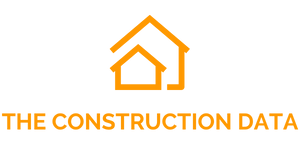
Green Building Materials Market Report 2025 Growth Driven by Sustainability and Regulations
Green Building Materials: Global Markets.” The report projects a rapid expansion of the global green building materials industry, underscoring the increasing role of sustainability in reshaping construction worldwide.
According to the analysis, the green building materials market is set to grow from $368.7 billion in 2025 to $708.9 billion by 2030, representing a robust compound annual growth rate (CAGR) of 14% over the forecast period. This significant growth trajectory highlights not only the rising demand for environmentally friendly construction solutions but also the broader transition of the construction sector toward carbon neutrality, health-conscious design, and resource efficiency.
What Are Green Building Materials?
Green building materials are products designed and manufactured to minimize environmental impact throughout their lifecycle—from production to end-of-life disposal. Unlike conventional construction products, they focus on conserving resources, lowering greenhouse gas emissions, and supporting healthier indoor environments.
These materials include:
- Low-carbon cement and concrete alternatives that cut embodied emissions.
- Recycled and green steel, which reduce dependence on energy-intensive virgin steelmaking.
- Reclaimed wood and bamboo, both renewable and resource-efficient.
- Bio-based insulation materials, such as cellulose or hemp fiber, offering strong thermal performance while being renewable.
- Solar-integrated building materials, including photovoltaic roofing systems.
- High-performance glazing and smart glass, which improve building energy efficiency.
Collectively, these solutions aim to improve a building’s operational performance, lower lifetime energy and maintenance costs, and help meet international climate goals.
Key Growth Drivers
The expansion of the global green building materials market is fueled by a mix of public awareness, regulation, and innovation.
- Heightened Public Awareness
Growing awareness of climate change and environmental degradation has influenced both consumer demand and investor priorities. Tenants, homeowners, and corporate occupiers increasingly seek buildings with lower carbon footprints and healthier indoor air quality, creating strong market incentives. - Stringent Environmental Regulations
Governments worldwide are implementing policies to accelerate the transition to sustainable construction. For example:- The European Union’s Energy Performance of Buildings Directive (EPBD) requires the adoption of energy-efficient construction practices and materials.
- The EU’s Carbon Border Adjustment Mechanism (CBAM), gradually introduced since 2023, places tariffs on carbon-intensive imports, making lower-carbon alternatives more competitive.
- Certification Programs
The market has also been driven by widespread adoption of green building certification systems, including:- LEED (Leadership in Energy and Environmental Design), led by the U.S. Green Building Council.
- BREEAM (Building Research Establishment Environmental Assessment Method), widely used in Europe.
- The WELL Building Standard, focusing on occupant health and well-being.
- Government Incentives and Initiatives
Many governments are offering tax benefits, subsidies, and preferential procurement policies to promote sustainable materials. These measures have encouraged adoption among developers, contractors, and property owners.
Market Dynamics

The dynamics of the green building materials market are shaped by regulatory, technological, economic, and environmental trends.
- Regulatory Pressure: Climate policy is now a major driver of construction practices. Regions such as the EU, North America, and parts of Asia-Pacific are raising mandatory efficiency standards.
- Economic Considerations: Although green materials can have higher upfront costs, they typically lead to long-term savings in energy use, water consumption, and maintenance. This life-cycle value proposition is increasingly recognized by developers and investors.
- Technological Advancements: Innovations in smart materials, nanotechnology, and additive manufacturing have created high-performance products with both environmental and economic benefits.
- Environmental Imperatives: Construction accounts for nearly 40% of global carbon emissions, making material choices a central focus in global climate strategies.
Report Scope and Methodology
The new report offers a comprehensive analysis of the green building materials market, combining industry data, expert insights, and projections.
Scope of Coverage:
- Building Types: Residential, commercial, industrial, and institutional.
- Applications: Structural, exterior, interior, and building system components.
- Product Categories: Cement, steel, wood, insulation, glass, roofing, and more.
Data Sources:
The analysis incorporates input from major associations such as the World Green Building Council, Indian Green Building Council, Alliance for Sustainable Building Products, and similar organizations across Europe and North America. Industry revenue data, supplier feedback, and regulatory updates were triangulated to build reliable forecasts.
Methodology:
- Revenue estimates for 2024 and 2025, with forecasts extending to 2030.
- Market share breakdown by region, application, and building type.
- Regulatory impact assessment and policy tracking.
- Benchmarking of corporate ESG practices and sustainability disclosures.
Report Highlights
The report is data-rich, including:
- 41 data tables and 54 additional tables covering market segmentation.
- Revenue data from 2024 (baseline), estimates for 2025, forecasts for 2029, and projected CAGRs through 2030.
- Insights into opportunities and challenges, including rising demand for carbon-neutral materials and barriers such as higher costs or limited regional availability.
- Analytical frameworks, including Porter’s Five Forces, PESTLE analysis, and global supply chain assessment.
- Patent analysis, tracking innovation in bio-based materials, carbon capture concrete, and energy-efficient glazing.
- ESG trend analysis, highlighting how consumer sentiment and investor behavior are influencing corporate sustainability strategies.
- Case studies showcasing successful green building projects and material applications.
Leading Market Players
The industry is highly competitive, with established players and innovative entrants shaping the market. The report profiles leading companies, including:
- Holcim – A global leader in sustainable cement and concrete solutions.
- Saint-Gobain – Specializing in insulation, glazing, and construction materials with a strong focus on sustainability.
- China National Building Material Co. Ltd. (CNBM) – A major supplier in the Asia-Pacific region, expanding its portfolio of low-carbon products.
- Kingspan Group – Known for energy-efficient insulation and building envelope solutions.
- Owens Corning – A leader in insulation, roofing, and fiberglass composites with an emphasis on green performance.
These companies are driving R&D investments, strategic alliances, and acquisitions to strengthen their market positions and align with global sustainability goals.




